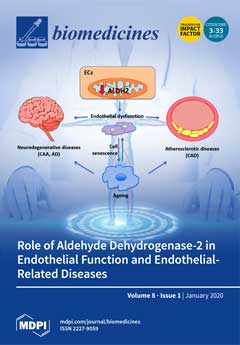Neurotoxin exposure of zebrafish larvae has been used to mimic a Parkinson’s disease (PD) phenotype and to facilitate high-throughput drug screening. However, the vulnerability of zebrafish to various neurotoxins was shown to be variable. Here, we provide a direct comparison of ablative effectiveness
[...] Read more.
Neurotoxin exposure of zebrafish larvae has been used to mimic a Parkinson’s disease (PD) phenotype and to facilitate high-throughput drug screening. However, the vulnerability of zebrafish to various neurotoxins was shown to be variable. Here, we provide a direct comparison of ablative effectiveness in order to identify the optimal neurotoxin-mediated dopaminergic (DAnergic) neuronal death in larval zebrafish. Transgenic zebrafish, Tg(
dat:eGFP), were exposed to different concentrations of the neurotoxins MPTP, MPP
+, paraquat, 6-OHDA, and rotenone for four days, starting at three days post-fertilization. The LC
50 of each respective neurotoxin concentration was determined. Confocal live imaging on Tg(
dat:eGFP) showed that MPTP, MPP
+, and rotenone caused comparable DAnergic cell loss in the ventral diencephalon (vDC) region while, paraquat and 6-OHDA caused fewer losses of DAnergic cells. These results were further supported by respective gene expression analyses of
dat,
th, and
p53. Importantly, the loss of DAnergic cells from exposure to MPTP, MPP
+, and rotenone impacted larval locomotor function. MPTP induced the largest motor deficit, but this was accompanied by the most severe morphological impairment. We conclude that, of the tested neurotoxins, MPP
+ recapitulates a substantial degree of DAnergic ablation and slight locomotor perturbations without systemic defects indicative of a Parkinsonian phenotype.
Full article






